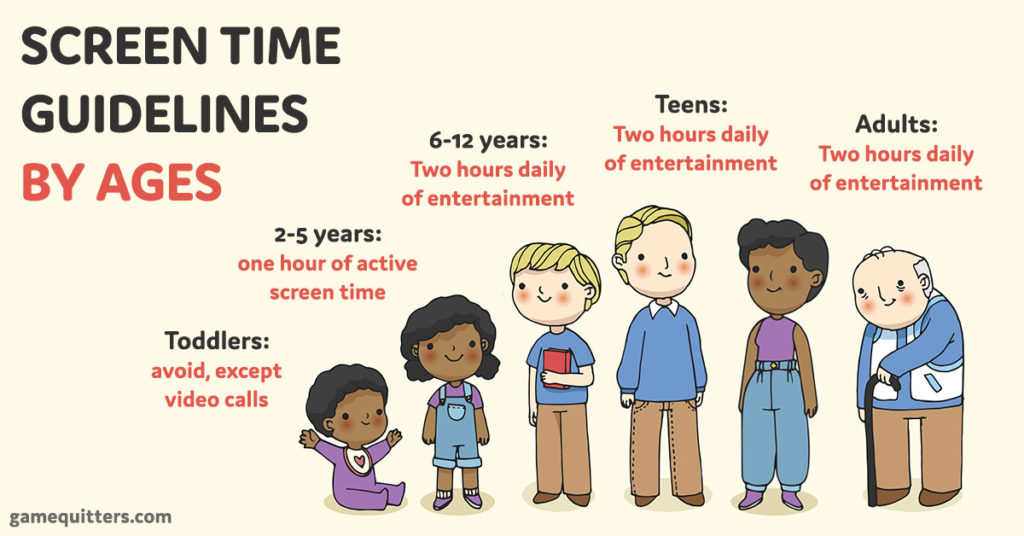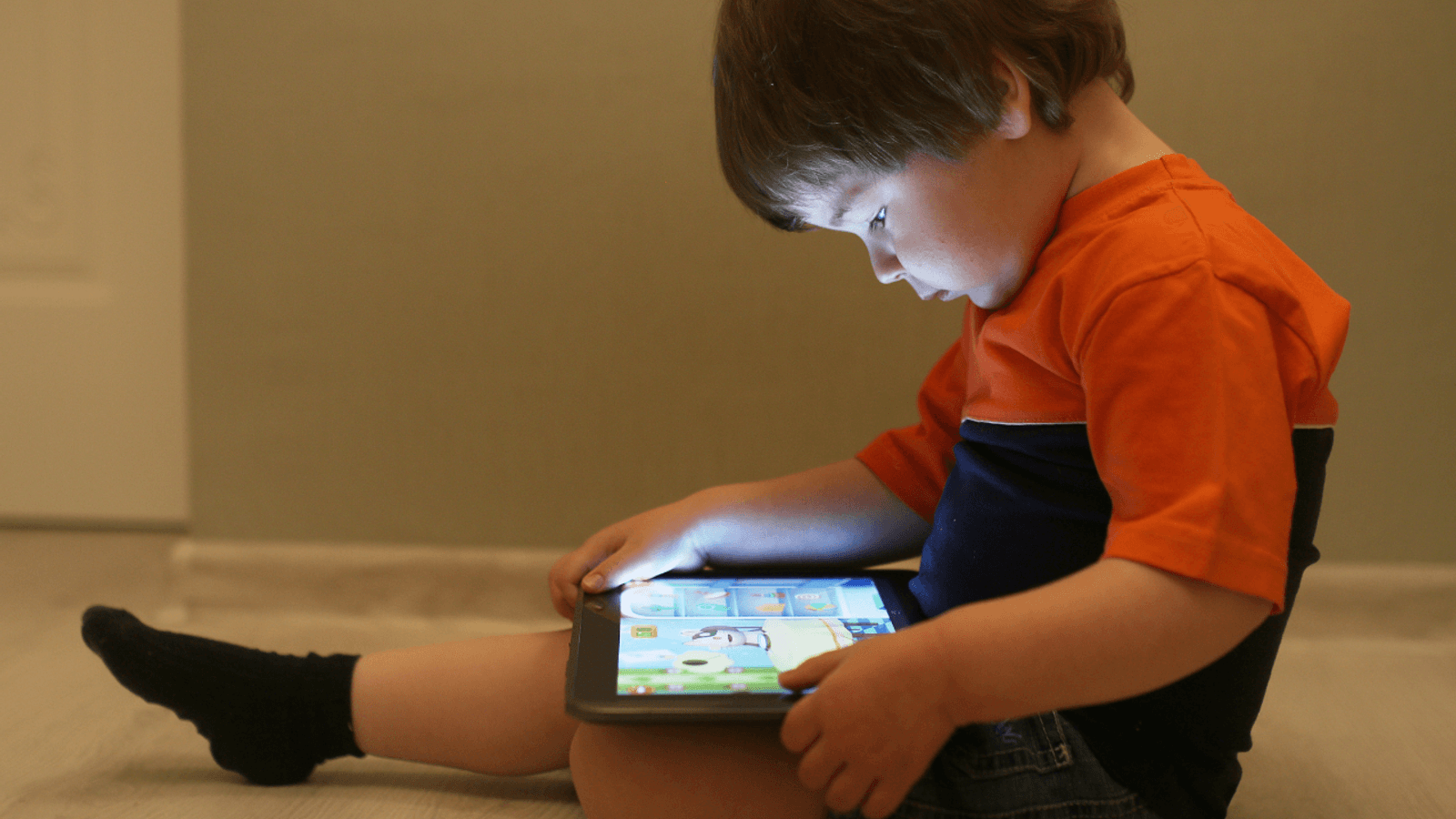Screen Time Guidelines for Kids: Complete 2025 Parent's Guide
Screen Time Guidelines for Kids: Complete 2025 Parent's Guide

Navigate the digital age with confidence using evidence-based screen time recommendations, practical parenting strategies, and enriching alternatives like storytelling and educational activities that promote healthy child development.
The Current State of Children's Screen Time in 2025
The landscape of children's digital media consumption has dramatically evolved, with screens now serving as educational tools, entertainment platforms, and even temporary childcare solutions. Recent research from leading pediatric institutions reveals striking patterns in how families navigate this digital relationship.

Alarming Statistics That Every Parent Should Know
- 49% of parents rely on screens daily to manage parenting responsibilities
- 81% of children under 13 now have their own digital device
- 54% of parents fear their child is addicted to screens
- 21 hours per week - actual screen time vs. the preferred 9 hours by parents
- 59% of children began using screens by age three
These statistics reflect a complex reality where parents balance convenience with concern, necessity with guilt. The conversation has evolved beyond simple time limits to encompass quality, context, and the broader impact on family dynamics and child development.
American Academy of Pediatrics: Updated 2025 Guidelines

The American Academy of Pediatrics has moved away from rigid time-based restrictions, recognizing that the digital landscape requires a more nuanced approach. Their evidence-based guidelines focus on the quality of digital interactions rather than simply counting minutes and hours.
Key Principle: Quality Over Quantity
Rather than setting universal time limits, the AAP emphasizes considering the type of content, the context of use, and how screen time fits into a child's overall daily activities and development.
Age-Specific Recommendations
Ages 0-18 months
Avoid screens other than video chatting with family members. Focus on real-world exploration, physical play, and face-to-face interaction.
Ages 18-24 months
Watch high-quality programming together with your child. Help them understand what they're seeing and how it relates to their world.
Ages 2-5 years
Limit screen use to 1 hour per day of high-quality programming. Co-view with children and help them apply what they learn to real life.
Ages 6 and older
Place consistent limits on screen time. Ensure screens don't interfere with sleep, physical activity, and other healthy behaviors.

The 5 C's Framework: A Modern Approach to Digital Wellness
The AAP's innovative 5 C's framework provides parents with a comprehensive approach to evaluating and managing their children's digital media use. This evidence-based model moves beyond simple time restrictions to focus on meaningful engagement and overall well-being.

1. Content - What Are They Consuming?
Focus on educational, age-appropriate, and high-quality content that promotes learning and positive values. Consider how different types of content affect your child's mood, behavior, and development.
- Educational apps that teach reading, math, or science concepts
- Creative platforms that encourage artistic expression
- Interactive stories and digital books that promote literacy
2. Context - When and Where?
Consider the timing and environment of screen use. Avoid screens during meals, before bedtime, or when they interfere with family time and face-to-face interactions.
- Create screen-free zones in bedrooms and dining areas
- Establish device-free times during homework and family activities
- Use screens purposefully rather than as background noise
3. Connection - Are They Isolated or Engaged?
Prioritize content that facilitates social connection and family engagement over passive, isolating activities.
- Video calls with distant family members
- Collaborative games that involve multiple family members
- Educational content that sparks conversation and questions
4. Crowding Out - What's Being Replaced?
Ensure screen time doesn't replace essential activities like sleep, physical activity, face-to-face social interaction, and creative play.
- Maintain regular sleep schedules without screen interference
- Preserve time for outdoor play and physical exercise
- Protect opportunities for imaginative and creative play
5. Communication - Are You Talking About It?
Maintain open dialogue about digital media use, online safety, and the importance of balance in all aspects of life.
- Discuss what children see and learn from digital content
- Teach critical thinking about online information and advertising
- Create family media agreements with clear expectations
The Magic of Stories: Screen-Free Alternatives That Captivate

While screens can provide educational value, nothing replaces the irreplaceable magic of traditional storytelling. Bedtime stories, fairy tales, and imaginative narratives offer unique developmental benefits that digital media simply cannot replicate.
Why Stories Matter More Than Ever
Cognitive Development
Children stories and bedtime stories enhance language development, expand vocabulary, and improve comprehension skills more effectively than passive screen consumption.
Emotional Intelligence
Moral stories and fables teach empathy, emotional regulation, and social understanding through relatable characters and meaningful narratives.
Family Bonding
Storytime creates intimate moments of connection, fostering secure attachment and positive family traditions that last a lifetime.
Imagination & Creativity
Fantasy stories and adventure tales stimulate creative thinking and imaginative play in ways that predetermined digital content cannot match.

Building Your Family's Story Library
- Classic Tales: Timeless stories like Cinderella, Jack and the Beanstalk, and The Three Little Pigs teach universal lessons
- Animal Stories: Engaging narratives featuring beloved animal characters that teach friendship and kindness
- Cultural Stories: Diverse tales from around the world that broaden perspectives and celebrate differences
- Educational Stories: Fun narratives that incorporate learning about science, history, and nature
Pro Tip: Creating Interactive Storytimes
Transform picture books into interactive experiences by encouraging children to predict plot developments, discuss character motivations, and relate story lessons to their own lives. This engagement far exceeds the passive consumption typical of screen time.
Screen-Free Activities That Actually Work

Creating engaging alternatives to screen time requires creativity, planning, and understanding what truly captures children's attention. The most successful screen-free activities combine physical movement, creative expression, and opportunities for learning and social connection.
Outdoor Adventures
- Nature scavenger hunts and exploration walks
- Gardening projects and plant observation
- Chalk art and sidewalk creativity
- Playground games and physical challenges
- Bike rides and hiking adventures
Creative Expression
- Art projects with recycled materials
- Music and dance exploration
- Drama and puppet shows
- Building projects with blocks or cardboard
- Cooking and baking together
Learning Through Play
- Science experiments and discovery activities
- Board games and puzzles
- Reading challenges and library visits
- Math games using everyday objects
- Geography adventures and map exploration
Social Connection
- Playdates and cooperative games
- Community service projects
- Family game nights and traditions
- Storytelling and joke-sharing sessions
- Neighborhood exploration and visits

Common Screen Time Concerns and Evidence-Based Solutions
Modern parents face unprecedented challenges in managing children's digital wellness. Understanding the most common concerns and their evidence-based solutions can help families make informed decisions about screen time management.

Screen Addiction and Dependency
The Concern: 54% of parents worry their child is addicted to screens, observing behaviors like tantrums when screen time ends, difficulty focusing without devices, and preferring screens over other activities.
Evidence-Based Solutions:
- Implement gradual transitions rather than abrupt screen time endings
- Create engaging alternative activities available immediately after screen time
- Use visual timers and countdown warnings to prepare children for transitions
- Model healthy device relationships through your own behavior
Sleep Disruption and Bedtime Struggles
The Concern: Blue light exposure and stimulating content can interfere with natural sleep patterns, leading to bedtime resistance and poor sleep quality.
Evidence-Based Solutions:
- Implement a "digital sunset" - no screens 1-2 hours before bedtime
- Replace screen time with calming bedtime stories and quiet activities
- Create charge stations outside bedrooms for all family devices
- Use blue light filters during necessary evening screen use
Reduced Physical Activity and Outdoor Play
The Concern: Excessive screen time can lead to sedentary behavior, contributing to childhood obesity and reduced physical fitness.
Evidence-Based Solutions:
- Require physical activity before any recreational screen time
- Create active screen time options like dance videos or movement games
- Schedule regular outdoor time as non-negotiable family activities
- Use activity trackers or goals to gamify physical movement
Social Skills and Emotional Development
The Concern: Over-reliance on digital communication may impact face-to-face social skills and emotional intelligence development.
Evidence-Based Solutions:
- Prioritize co-viewing and discussing content together
- Arrange regular playdates and social activities
- Teach emotional recognition and regulation through storytelling
- Practice conversation skills during screen-free family meals

Practical Implementation Strategies for Busy Families
Creating sustainable screen time management requires practical, realistic strategies that work with your family's unique schedule and needs. These evidence-based approaches have proven successful across diverse family situations.
The "Earn Your Screen Time" System
Rather than arbitrary time limits, children earn screen privileges through completing essential activities first.
Daily Requirements Before Recreational Screen Time:
- Complete homework and educational activities
- Engage in 30-60 minutes of physical activity
- Contribute to family responsibilities (age-appropriate chores)
- Spend time in creative or imaginative play
- Participate in family conversation or connection time
Creating Screen-Smart Environments
Design your physical space to naturally encourage healthy digital habits.
Screen-Free Zones:
- • Bedrooms and sleep areas
- • Dining table and kitchen
- • Car (except long trips)
- • Study/homework areas
Designated Tech Areas:
- • Family room with comfortable seating
- • Device charging station
- • Easy access to alternative activities
- • Good lighting and ergonomic setup
Family Media Agreements
Collaborative rule-setting that involves children in creating fair, clear expectations.
Sample Agreement Elements:
Screen Time Guidelines:
- • Weekday limits and weekend flexibility
- • Educational vs. entertainment balance
- • Co-viewing requirements for certain content
Family Expectations:
- • Device-free meal times
- • Homework completion first
- • Respectful transitions when time ends

The 3-2-1 Rule for Healthy Digital Habits
Hours before bed: No more caffeinated screens or stimulating content
Hours before bed: No recreational screen time
Hour before bed: All devices charging outside the bedroom
Understanding the Developmental Impact of Screen Time
Recent neuroscience research reveals how different types and amounts of screen exposure affect developing brains. Understanding these impacts helps parents make informed decisions about their children's digital consumption.

Critical Periods of Brain Development
Children's brains undergo rapid development, with certain periods being particularly sensitive to environmental influences, including digital media exposure.
Ages 0-3: Foundation Building
Neural pathways form rapidly. Real-world sensory experiences and human interaction are crucial for healthy brain architecture development.
Ages 4-7: Language and Social Skills
Critical period for language acquisition and social-emotional learning. High-quality, interactive content can supplement but not replace human interaction.
Ages 8-12: Executive Function
Development of self-control, planning, and decision-making abilities. Balanced screen use can support learning while preserving cognitive flexibility.
Positive vs. Problematic Screen Use Indicators
Signs of Healthy Screen Relationships
- • Child can transition away from screens without major distress
- • Shows interest in non-screen activities and hobbies
- • Maintains good sleep patterns and physical health
- • Demonstrates age-appropriate social skills
- • Uses screens purposefully rather than mindlessly
- • Can discuss and reflect on digital content
Warning Signs to Monitor
- • Extreme distress when screen time ends
- • Loss of interest in previously enjoyed activities
- • Sleep disruption or resistance to bedtime
- • Declining academic performance or attention issues
- • Increased aggression or mood swings
- • Physical complaints (headaches, eye strain)

The Bedtime Story Revolution: Digital Wellness Meets Traditional Magic

In our quest for digital balance, we're rediscovering the profound power of bedtime stories. These nightly rituals offer everything screens promise—entertainment, education, and engagement—while providing irreplaceable benefits for both children and families.
Why Bedtime Stories Outperform Screen Time
Superior Sleep Preparation
Unlike screens that emit blue light and provide stimulating content, storytelling naturally calms the nervous system and prepares children for rest.
- • Reduces cortisol (stress hormone) levels
- • Activates the parasympathetic nervous system
- • Creates predictable, comforting routines
Enhanced Language Development
Interactive storytelling exposes children to rich vocabulary and complex sentence structures that passive screen content rarely matches.
- • 30% more vocabulary exposure than educational apps
- • Develops listening and comprehension skills
- • Encourages questions and dialogue
Creating Your Family's Magical Story Collection
Classic Fairy Tales
Timeless stories like Goldilocks, Little Red Riding Hood, and Sleeping Beauty that teach universal lessons about courage, kindness, and perseverance.
Modern Adventures
Contemporary tales featuring diverse characters and relevant themes that help children navigate modern challenges while sparking imagination.
Interactive Picture Books
Engaging illustrated books that encourage participation, prediction, and discussion, creating active learning experiences.

Transform Story Time Into Digital Detox Time
Make bedtime stories your family's daily digital detox ritual. This natural transition helps everyone—parents included—step away from devices and connect with each other.
The 30-Minute Wind-Down Routine:
- All family devices go to charging stations (30 min before bed)
- Dim lights and prepare comfortable reading space (25 min before)
- Choose story together and settle in (20 min before)
- Read story with voices, discussion, and cuddles (15 min before)
- Quiet reflection or gentle conversation (5 min before)
Discover Magical Bedtime Stories for Your Family
Explore our curated collection of heartwarming tales, adventure stories, and educational narratives designed to create perfect bedtime moments while naturally reducing screen dependence.
Explore Magical Bedtime StoriesMeasuring Success: How to Track Your Family's Digital Wellness
Creating sustainable change requires ongoing assessment and adjustment. These practical metrics help families understand whether their screen time strategies are working effectively.
Weekly Family Check-ins
Schedule brief weekly conversations to assess how everyone feels about current screen time balance.
Questions to Explore:
- • What activities brought you the most joy this week?
- • Did screen time feel balanced or excessive?
- • What new non-screen activities would you like to try?
- • How well did our family rules work?
- • What adjustments might help next week?
Observable Wellness Indicators
Monitor these key areas to gauge the effectiveness of your screen time approach.

The 30-Day Digital Wellness Challenge
Transform your family's relationship with technology through this structured month-long approach that gradually implements healthier digital habits.
Awareness
Track current usage without judgment. Notice patterns and triggers.
Boundaries
Implement screen-free zones and times. Create family media agreement.
Alternatives
Introduce engaging non-screen activities. Expand story time and outdoor play.
Integration
Fine-tune approach based on what works. Celebrate successes and adjust challenges.
Conclusion: Building a Healthy Digital Future for Your Family
The goal isn't to eliminate screens from our children's lives—it's to help them develop a healthy, intentional relationship with technology that enhances rather than replaces real-world experiences, relationships, and development.
Key Takeaways for Success
- Focus on content quality and family engagement, not just time limits
- Create rich alternatives like storytelling, outdoor play, and creative activities
- Model healthy digital behaviors as a family unit
- Stay flexible and adjust strategies as children grow and develop
Remember: Progress, Not Perfection
Every family's digital wellness journey is unique. What matters most is creating intentional, loving boundaries that support your children's overall development and well-being.
Start with small changes, celebrate victories, and remember that the most important screen time guideline is the one that works for your family's specific needs and values.

Start Your Family's Digital Wellness Journey Today
Ready to transform screen time from a source of stress into an opportunity for intentional family connection? Begin with our magical bedtime story collection—the perfect first step toward healthier digital habits.
Join thousands of families creating healthier digital habits through the power of storytelling